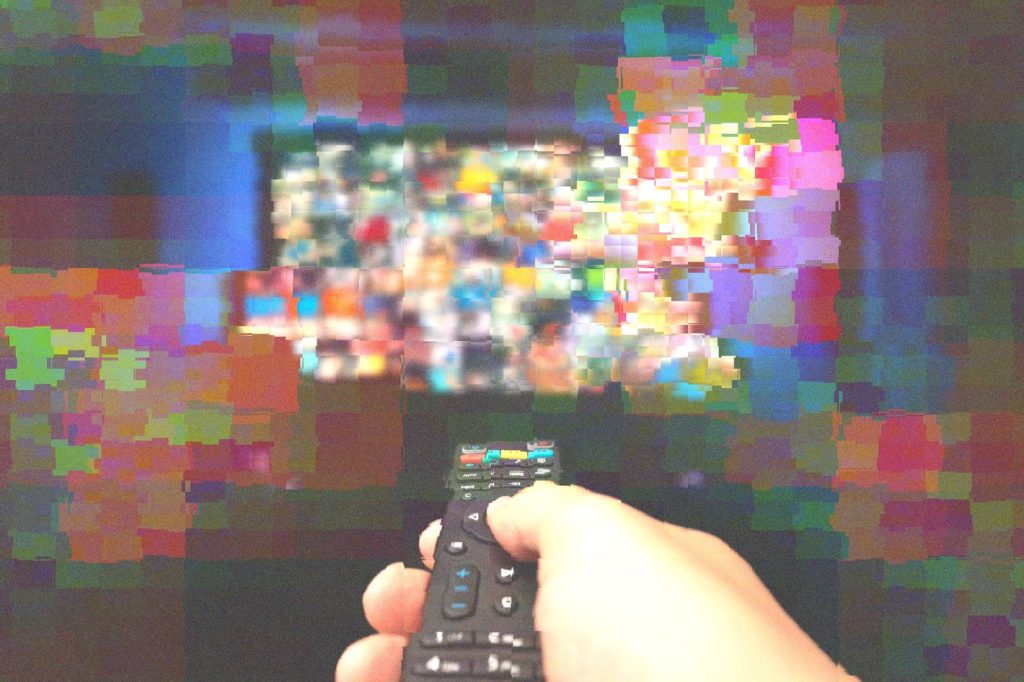Photo-Illustration: Intelligencer; Photos: Getty Images
I wish I remembered half as much about more important milestones than “my first time streaming Netflix,” but we don’t get to choose our brains. It must have been late 2007, and the company had just started experimenting beyond DVD by mail. I was watching on a creaky Dell laptop, probably in bed. I remember there weren’t many options (at launch, Netflix’s “Watch Now” feature had only around a thousand movies, many of which seemed to be mockbusters). I think I ended up choosing The Matrix. I think I didn’t finish it, because there was no way to watch on a real TV. I sort of remember thinking it was cool that it worked at all, but that my roommate’s compulsive piracy habit still provided a better service. One thing I definitely remember, though, is that it didn’t have ads. TV did, network websites did, and soon, so would other baby streamers like Hulu. But not Netflix. Which was nice.
Skip ahead to this week. Depending on what you call YouTube, Netflix is now the leading streamer, with hundreds of millions of customers and billions of dollars of original programming in its catalogue. This week, it shared some news:
Amy Reinhard, Netflix’s President of Advertising, took the stage at our third Upfront to highlight the growth of the ad-supported plan, which now reaches more than 94M global monthly active users and more 18-34-year-olds than any other US broadcast or cable network. Ads members in the US are highly engaged, spending an average of 41 hours per month on Netflix.
Netflix, onetime avatar of post-advertising TV, now does upfronts; on top of that, its ad-supported subscription tier (which is cheaper, but not free) is by far the fastest-growing part of its business, more than doubling in a year. While a lot of these ad-tier subscriptions will be downgrades from more expensive plans, rather than new subscribers, that’s fine for Netflix: The $10 price gap between its ad-supported tier, which was just raised in January, and its premium tier is proving relatively easy to close with sponsorship. The company once opposed to “chopping up” its content, whose founder insisted should be a “safe respite” and not “tied up with all that controversy around advertising,” and which used to argue that ad-free TV development led to better programming, is doing everything it can to become an advertising heavyweight.
It’s on its way. Netflix no longer discloses total subscriber numbers, but 94 million ad-tier subscribers, based on the most recent available data, probably account for a bit less than a third of its total subscribers. Earlier this year, the company opened its long-awaited ad platform, which it hopes will streamline ad sales but which will notably put it in more direct competition with YouTube, which it has lately described as its biggest competitor. This comparison, along with recent tests of a “TikTok-style” discovery feed, makes it clear that Netflix is trying to stake a claim in the broader digital advertising market, competing directly with companies like Google, Meta, and Amazon, which, to be fair, are some of the only bigger internet firms left to take on. To do so, the company says, it’s not just permitting ads. It’s ready to extrude brands through its interfaces in whole new ways:
Netflix debuted a new modular framework for ad formats that leverages generative AI to instantly marry advertisers’ ads with the worlds of our shows. This will create a better, more relevant experience for our members and drive the best results. [Netflix’s head of advertising] unveiled the first capability with interactive midroll and pause formats that build custom advertising creative with added overlays, call to action, second screen buttons, and more to serve the right ad to the right member at the right time.
To translate this a bit, with the help of the Verge, this means that viewers “might see an ad that blends in with the show [they’re] watching,” like an “image of a product over a background inspired by one of its shows, like Stranger Things.” (Amazon announced something similar this week, telling brands about AI-powered contextual “pause ads” that could “dynamically align the ad message with the content viewers are watching — creating a natural and relevant connection.”) Looking past the thin AI angle here, the future of television sounds a lot like the rest of the internet’s recent past: targeted ads, automated product placement, the constant invention of new sponsorship formats, and the gradual disappearance of unmonetized attention.
The sensation of being constantly surveilled and contextually marketed to will of course be familiar to anyone who has opened a website, watched an online video, or used a social-media app in the last two decades, but it’s a fairly big pivot for Netflix. Users can still pay to avoid ads, but the last two years of numbers suggest the possibility that, soon, a majority won’t bother. At that point, Netflix won’t just have ads; it’ll be an advertising company. It’s already starting to program like one.

